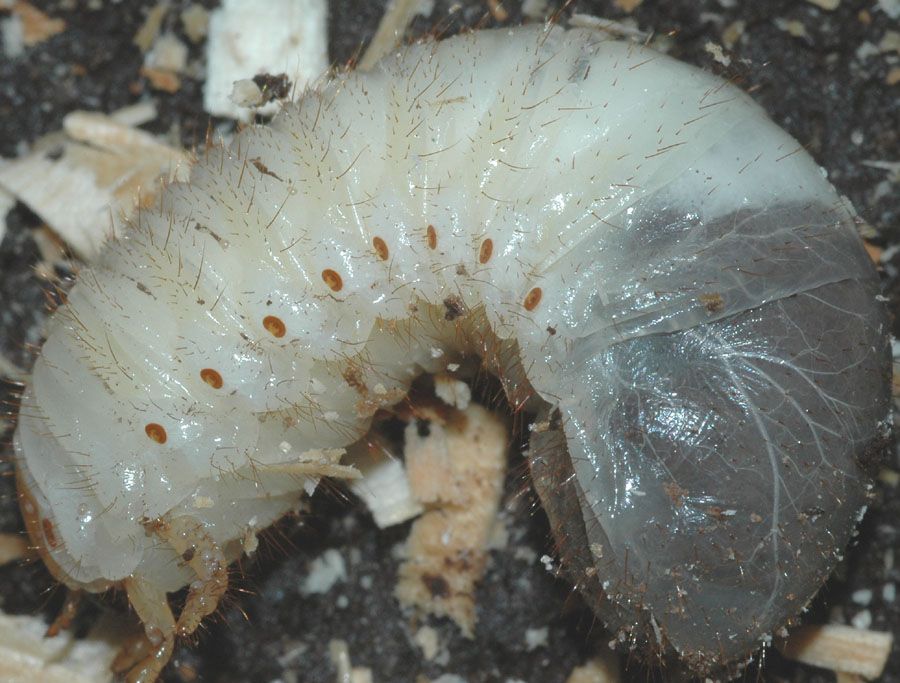UPDATED STORY
Here is the latest from the local paper on our problems with the southern pine beetle. Someone posted yesterday something about dying pines.
Beetle invasion spreads
By Robert Sargent Jr. | Sentinel Staff Writer
Posted August 9, 2001
Rangers armed with chain saws have started to hack down 6,000 acres of forest across Florida, struggling to curb a devastating epidemic of ferocious pine beetles that are eating the trees.
Another 14,000 acres is expected to be added to the hit list before the year’s end, much of it in Central Florida, the hardest-hit part of the state. So far, Alachua County reports 1,700 acres of infestation; Marion, 957; Lake, 937; Orange, 462, Seminole, 530; and Volusia, 191. No beetles have been found in Osceola County.
In the Ocala National Forest, thousands of trees are being toppled and left scattered across portions of the 450,000 acres as timber managers fight a losing battle to keep ahead of the beetles, District Ranger Jim Thorsen said.
"A number of spots are growing rapidly," Thorsen said. "It is very difficult to handle."
The beetles debuted in tandem with a crippling drought that started nearly four years ago. Mostly, they stayed in remote areas, where they threatened timber but not people.
Now, they’re going to town.
One residential area in the Ocala forest has been threatened by falling trees, prompting Lake County code-enforcement officers to investigate whether homes in
Shockley Heights and Astor are threatened.
Trees fall near homes
"They [trees] are falling down in the roadways, and the residents have had to push them out of the way," said Lesta Ramsey, whose utility shed was smashed last year by a falling, bug-infested tree. Another collapsed onto her mobile home in Shockley Heights in June, damaging the side and flattening a chain-link fence.
Of the 6,000 acres of infestation reported on state and private lands, the U.S. Forest Service is monitoring and cutting 170 spots of infestation totaling more than 4,200 acres. Single sites range up to 300 acres. There is only one solution for the homeowner: Chop them down.
Then pay the bill.
"If they’re dead trees, I should be responsible for them, but it’s an overwhelming cost," said Ramsey, a cafeteria worker for the Lake County schools. "We moved way out here so we wouldn’t have to pay huge expenses -- this is very difficult on me." The beetles, she argued, spread to her trees from the national forest.
"If the bugs were taken care of properly in the forest before all this happened, maybe I wouldn’t have them here," Ramsey said.
By Friday, the Florida Division of Forestry hopes to open a beetle command center in Ocala to keep track of the insects and work with hundreds of private-property owners who are expected to cut the trees and haul them off their land -- or shell out the cash for someone else to do it. In Alachua, county officials have set up a fund to help residents who can’t afford the expense.
"Our biggest challenge is simply the large number of property owners and attempting to contact them," Marion County forester Greg Barton said.
Often, Barton said, landowners are difficult to reach. Some are simply unwilling to do anything, despite the enormous threat to Florida’s ecosystem.
Beetles eat variety of pines
The Southern pine beetle typically is attracted to loblolly pines. However, the beetles now are eating their way through a variety of pines, including long leaf, sand and slash pines. The onslaught is a result of Central Florida’s punishing drought, which has sapped moisture from trees, limiting their natural defense against the beetles.
When the beetle population reaches a large-enough size, it will devastate even healthy trees that normally would not be susceptible to attack. That’s why experts are predicting that the statewide infestation will rise to 20,000 acres by the end of the year. Already, Lake and west Orange counties, which were considered relatively safe from the bugs, have begun to report dead stands of trees.
Isolated attacks are commonplace throughout the South, but infestations of the bug are not.
Bugs move fast
Forestry officials first recorded an attack in Marion County in March 1997. They said then that it was the first time in 50 years that the Ocala National Forest was threatened by the bug. They also said Lake County was safe from attack. Three months later, the bugs had eaten their way across the border into Lake.
The beetles attack by colonizing a tree -- tunneling through the inner bark to lay eggs. In the process, they interrupt the flow of nutrients through the trunk, killing the tree. The bugs can spread quickly if left unchecked. If 5,000 beetles initially attack a tree, 25,000 new beetles may emerge a month later.
The insects can be killed by chemicals, but forest managers say that solution isn’t practical because of the number of trees, the cost of the chemicals and the effect on wildlife. If the trees are cut and left on the ground, Florida’s hot, humid days virtually cook the bugs inside. During rainy weather, however, that doesn’t work. The bugs flourish, so the downed trees have to be carted away. Lately, timber companies have had trouble doing that -- logging trucks routinely get stuck in the muddy forest roads.
So far, 26 counties have reported beetle damage at more than 1,800 spots. Outbreaks are biggest in Alachua, Baker, Columbia, Hamilton, Lake, Marion, Orange, Seminole, Suwannee and Volusia counties, according to division of forestry reports.
Robert Sargent can be reached at
[email protected] or 352-742-5909.
Copyright © 2001, Orlando Sentinel






